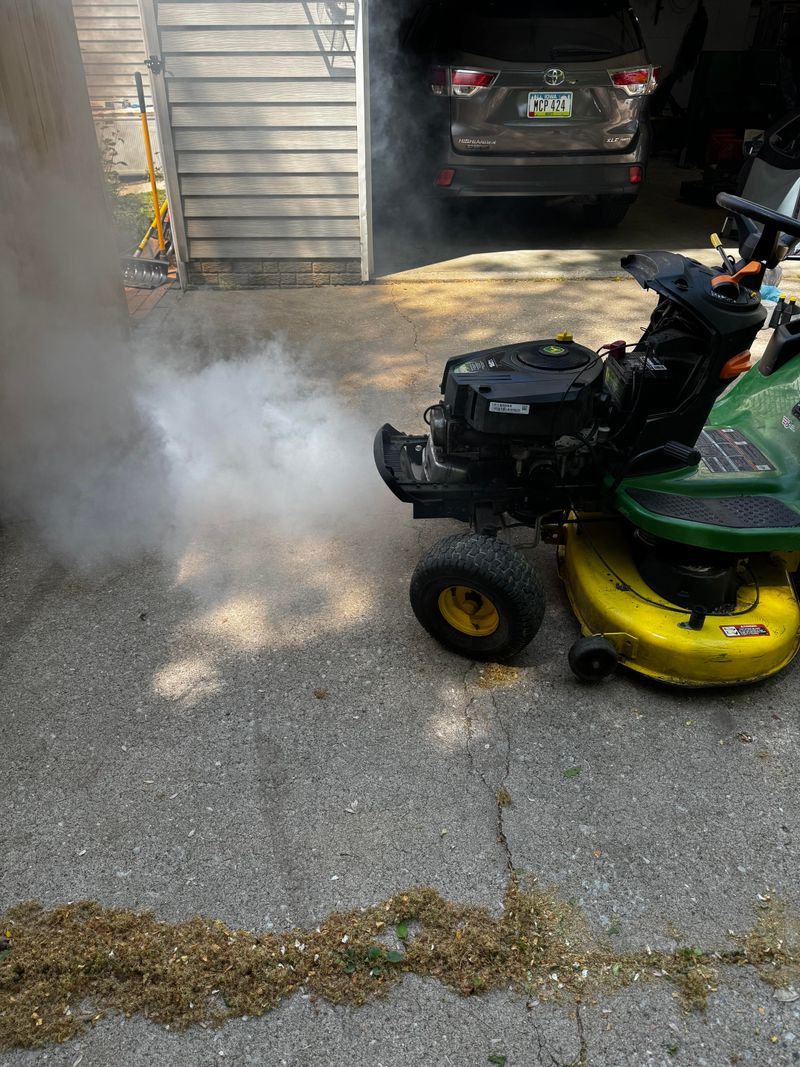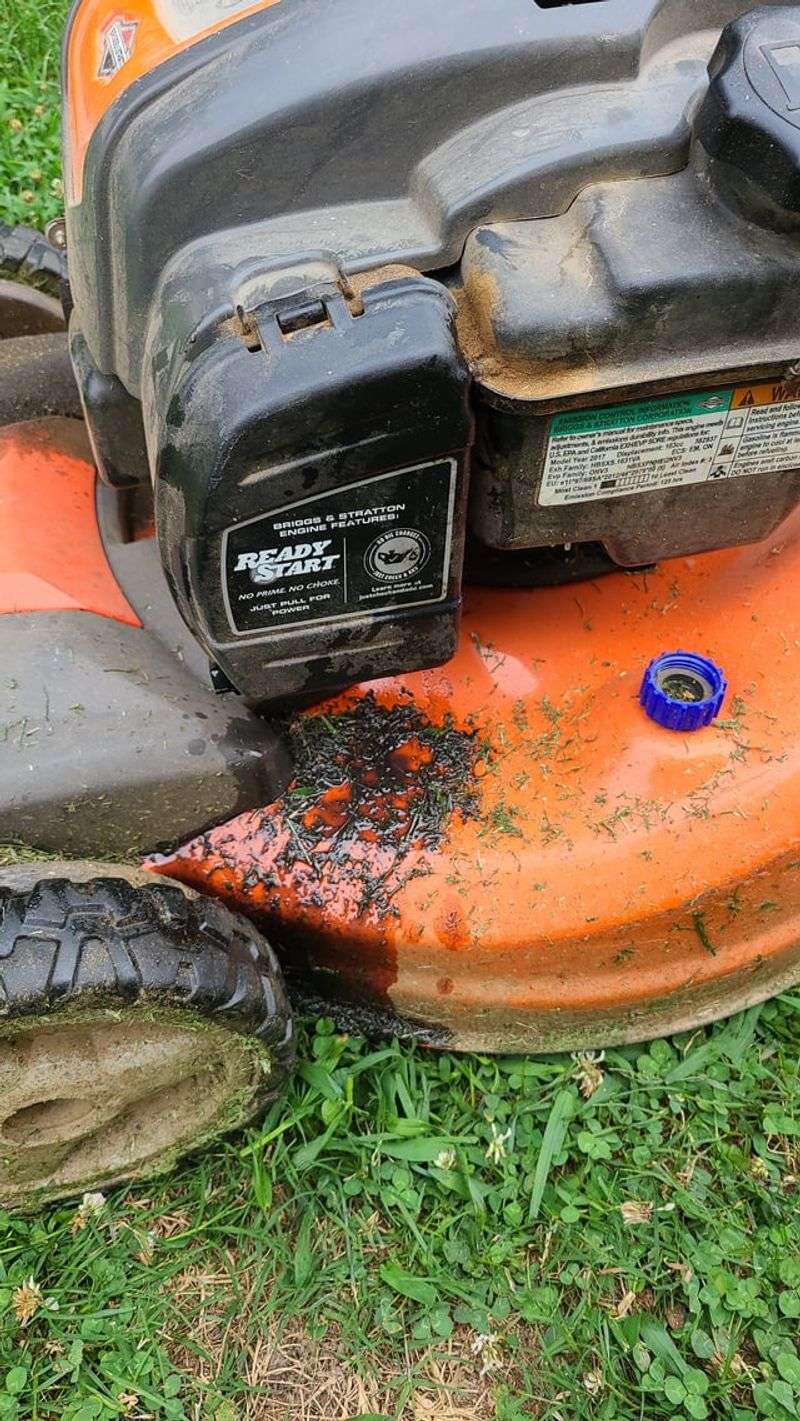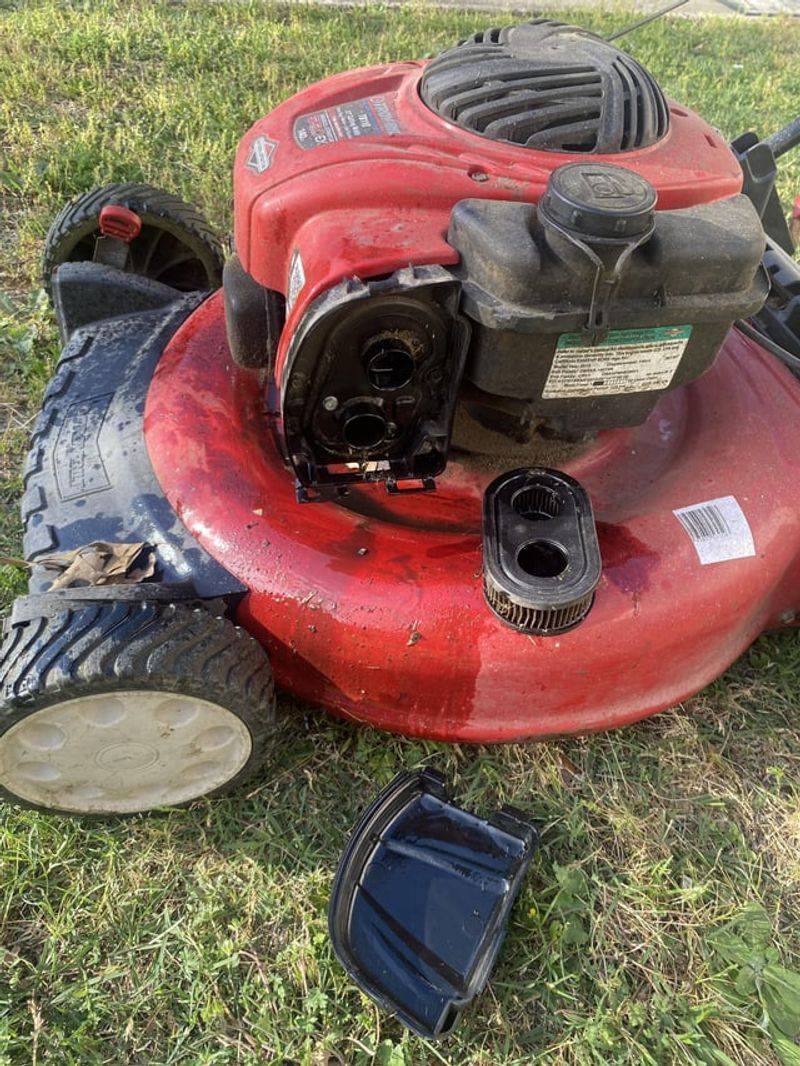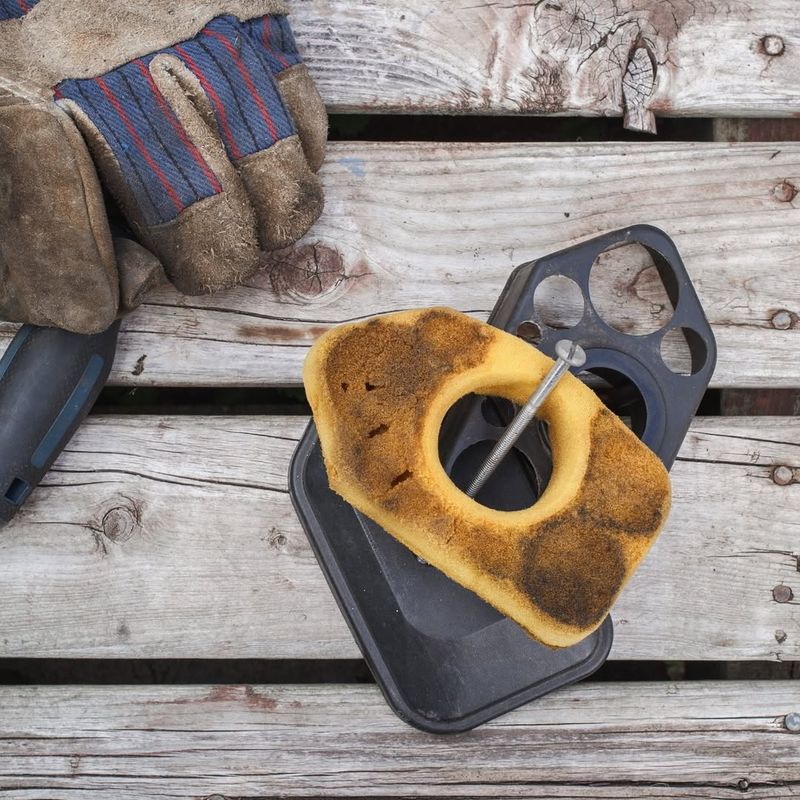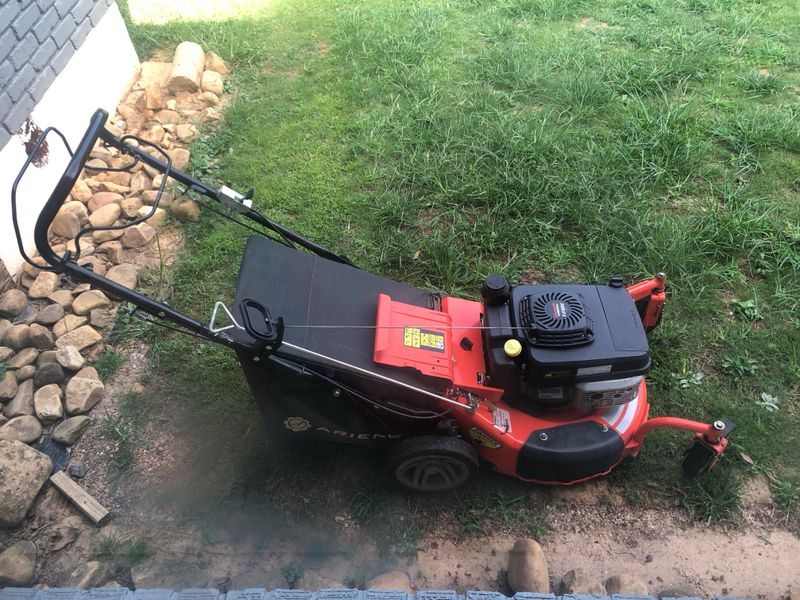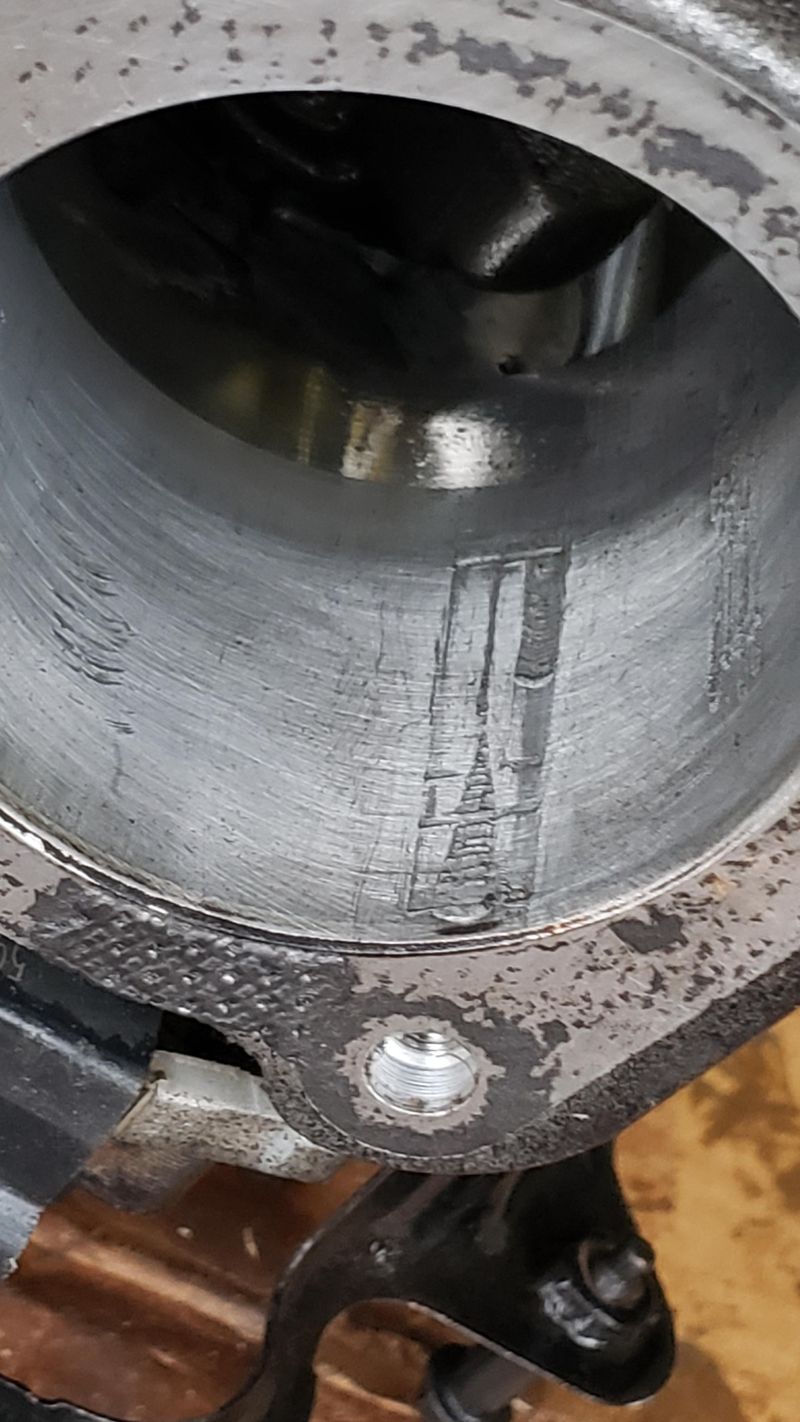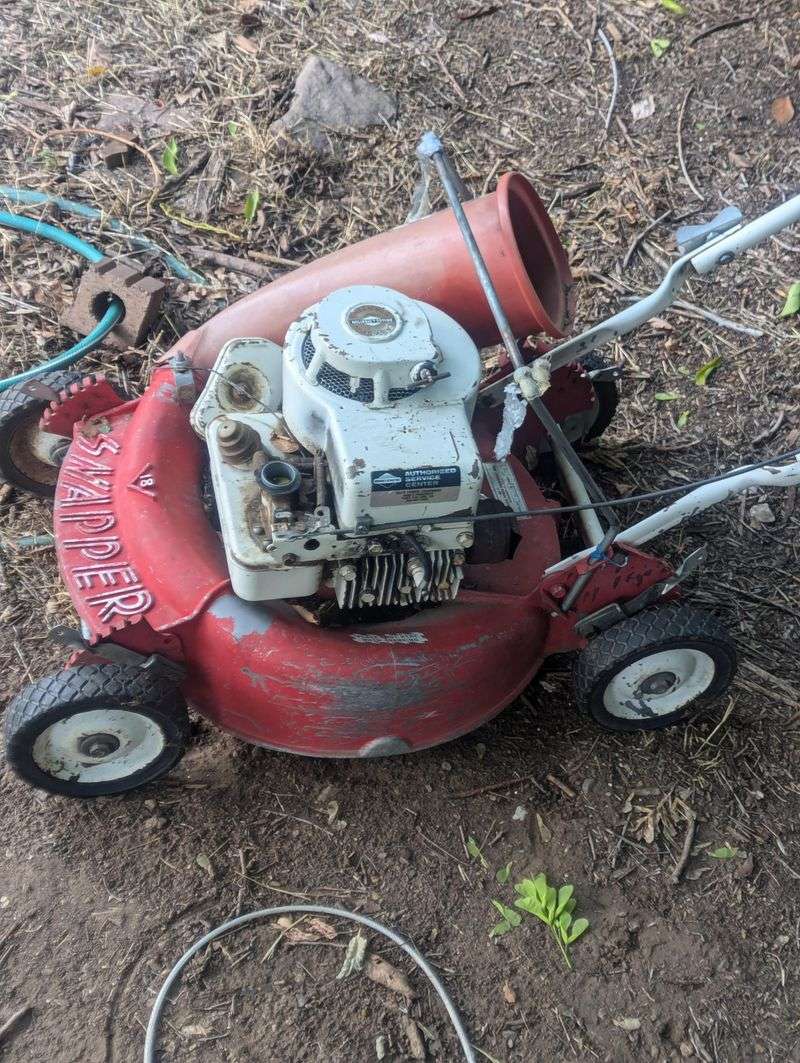Nothing ruins a mowing session in Texas like a puff of smoke coming from your lawn mower. I’ve seen it happen and discovered it usually signals something that’s easy to fix.
From fuel issues to clogs, most problems are simple to handle. Once you know the causes, your mower—and your lawn—will thank you.
1. Overfilled Oil Reservoir
Adding too much oil is one of the most common mistakes mower owners make. When oil levels get too high, the excess can leak into the combustion chamber and burn, creating thick white or blue smoke.
Check your dipstick regularly and drain any extra oil if you’ve gone overboard. Texas heat can make this problem worse since engines expand when hot.
Always add oil gradually and check levels between pours to avoid overfilling.
2. Wrong Type of Oil Used
Using the wrong oil viscosity or type can cause your mower to smoke, especially in Texas where temperatures soar during summer months. Motor oil that’s too thin burns off quickly and creates smoke.
Always consult your owner’s manual for the recommended oil type. Most mowers work best with SAE 30 or 10W-30 oil depending on the season.
Switching to the correct oil will reduce smoke and help your engine run smoothly.
3. Tipped Mower Leaking Oil
Did you know tipping your mower the wrong way causes oil to leak into places it shouldn’t be? When oil seeps into the air filter or exhaust, it burns and produces smoke once you start the engine again.
If you need to tip your mower for blade cleaning in Texas, always tilt it with the air filter side up. Let the mower run for a few minutes to burn off any leaked oil.
4. Dirty or Clogged Air Filter
Air filters trap dirt, grass clippings, and dust, but when they get too clogged, your engine can’t breathe properly. This causes an improper fuel-to-air mixture that leads to black smoke.
In dusty Texas conditions, air filters need cleaning or replacement more often. Remove the filter, tap out debris, or wash it if it’s foam-based.
Replace paper filters when they look dark and clogged for best performance.
5. Bad or Old Gasoline
Gasoline breaks down over time, especially when sitting in your mower through Texas winters or hot garage summers. Old fuel doesn’t burn efficiently and creates smoke along with rough engine performance.
Drain old gas and refill with fresh fuel if your mower has been sitting for more than 30 days. Add a fuel stabilizer to prevent future problems.
Fresh gas keeps your engine running clean and smoke-free.
6. Damaged or Worn Piston Rings
Piston rings seal the combustion chamber, but wear and tear can cause them to fail. When they’re damaged, oil sneaks into the cylinder and burns, producing blue smoke from the exhaust.
This issue often happens with older mowers or ones used heavily across Texas lawns. You might also notice decreased power and increased oil consumption.
Replacing piston rings requires mechanical skill, so consider taking your mower to a repair shop.
7. Carburetor Problems
Your carburetor mixes air and fuel in the right proportions, but when it malfunctions, you get too much fuel and not enough air. This rich mixture creates thick black smoke and wastes gas.
Carburetors can get gummed up from old fuel, which happens frequently in Texas heat. Cleaning or rebuilding the carburetor usually solves the problem.
You can buy carburetor cleaner at any hardware store and do it yourself with basic tools.
8. Blown Head Gasket
A blown head gasket is a serious problem that lets oil leak into the combustion chamber. White or blue smoke pours out continuously, and your mower may overheat or lose power quickly.
Overheating from mowing thick Texas grass in extreme heat can damage head gaskets. You might also smell burning oil or see oil around the engine.
Head gasket replacement is complex, so professional repair is usually the best option for this issue.
9. Excessive Engine Wear
Older mowers naturally experience internal wear on cylinders, valves, and seals. As parts wear down, oil consumption increases and smoke becomes a regular occurrence during operation.
If your mower has logged many hours cutting Texas lawns, it might simply be reaching the end of its lifespan. Regular maintenance can extend engine life, but eventually wear catches up.
At this point, you’ll need to decide between expensive repairs or buying a new mower.


